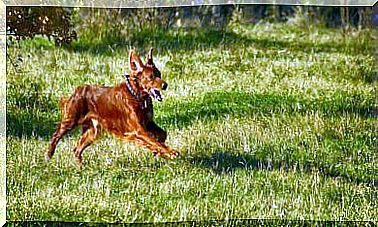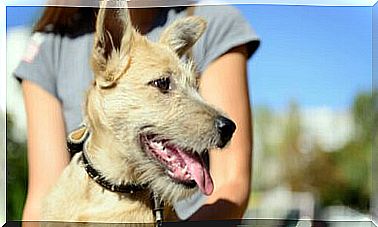Differences Between Wolves, Foxes And Coyotes
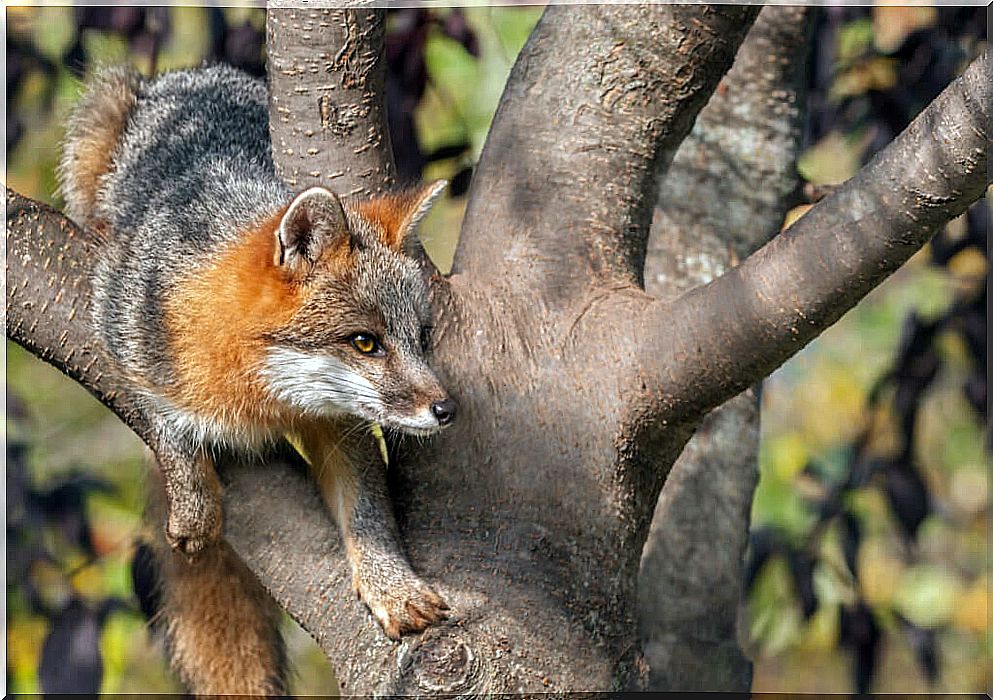
Canids are a very diverse family of carnivorous mammals, with about 34 species today. Most of them have a very similar body design, which makes it very easy to identify them as members of the same family. However, this similarity can make it difficult to distinguish between each of them. Could you name differences between wolves, foxes and coyotes?
In this article, we’ll discuss the most important ones. In any case, it is important to note that under these common names a number of different species are gathered. To avoid confusion, we will deal with 3 species in particular: the gray wolf ( Canis lupus ), the red fox ( Vulpes vulpes ) and the coyote ( Canis latrans ). Read on to learn how to distinguish these species perfectly.
Geographic distribution
Knowing where animals live makes their identification much easier. So that’s the first difference between wolves, foxes, and coyotes that we’re going to cover.
Foxes and wolves have one of the widest distributions of all mammals, covering most of the northern hemisphere. Wolves occur throughout most of Eurasia, except for the British Isles. They are also seen in Canada and the northernmost states of the US: Alaska, Minnesota, Wisconsin, Montana, Wyoming, Idaho, Washington and Oregon.
Foxes are distributed throughout Eurasia, some countries in North Africa (Morocco, Tunisia, Egypt, Sudan and Libya), throughout Canada and the United States, in addition to Australia. In parts of these spaces, they were introduced by humans.
In contrast, coyotes spread throughout North America, except in the coldest parts of Canada. Also, they occur in some areas of Central America. Therefore, no canids sighted in Europe, Asia or Africa can be a coyote.
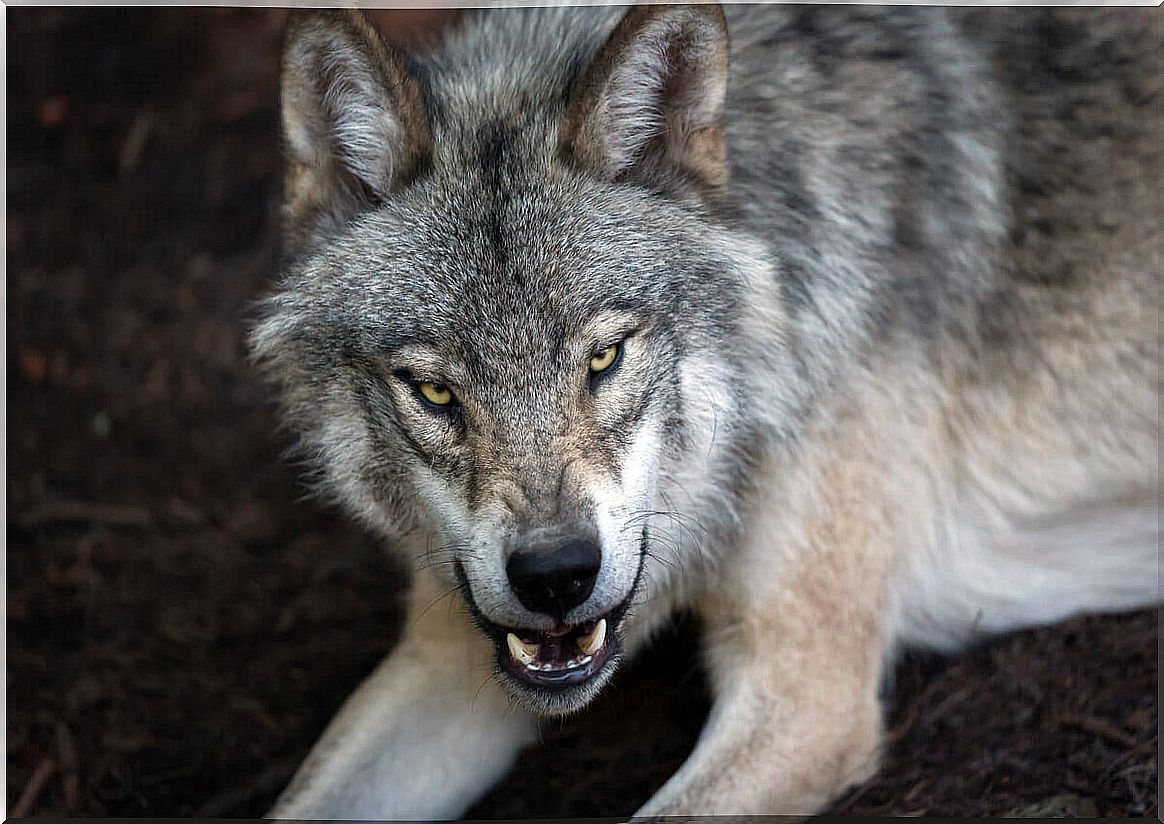
Size differences between wolves, foxes and coyotes
Without a doubt, one of the clearest differences between wolves, foxes and coyotes is size. Wolves are by far the largest, weighing from 18 kilos, the smallest specimens, to 79 kilos, the largest.
Its body reaches between 90 centimeters and 1.6 meters in length, not counting the tail, which can measure about 40 centimeters. In height, wolves can reach about 80 centimeters. Viewed in person, these animals are much larger than expected.
At first glance, coyotes are similar to wolves, but much smaller. These mammals weigh between 9 and 22 kilos and measure between 81 and 94 centimeters in length to the tail, which in turn reaches 40 centimeters. Furthermore, they reach between 58 and 66 centimeters in height.
Foxes are the smallest of all, only slightly larger than a house cat. They weigh only 3 to 10 kilos, their body is between 45 and 86 centimeters long and their tail measures between 30 and 55 centimeters. The height varies around 40 centimeters.
Differences in physical aspects between wolves, foxes and coyotes
It’s not just the size that sets these animals apart, as the colors and proportions are also distinctive aspects. Foxes are evolutionarily further away from the other two species discussed here, which results in a more easily discernible appearance.
These small carnivores have a very showy coat, which in winter is long, dense and intensely orange over most of the body. The legs and ears are black, while the tip of the tail, the ventral part of the body and the face are whitish. In summer, the coat is similar, but shorter and less visible.
In terms of proportions, foxes are more elongated and have shorter legs than the other two species. The tail is the longest in relation to the body and the thickest due to its dense coat.
On the other hand, wolves are the most robust, wide and muscular among these canids. Its head, large and heavy, has strong jaws and a wider muzzle than the rest. Ears are smaller and triangular. Especially in winter, the fur is dense, but not as long as that of foxes.
The coyote is considerably more graceful and leaner than the wolf. It has large ears and a thin, long, pointed muzzle. Their coat, which is shorter and less dense, tends to have slightly orange and gray tones, more or less light.
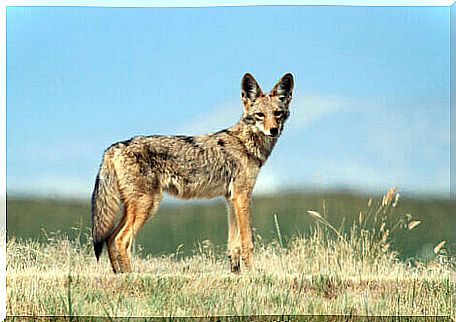
behavior and diet
Wolves are highly social animals and live in hierarchical packs. On the contrary, foxes are eminently lonely. Coyotes are between the two: they may be loners, but they also form groups. These social strategies translate into very different behaviors among the three species discussed here.
Wolves organize their packs to perfection to capture prey that they would not be able to kill separately and that will feed the entire group. They mainly specialize in large and medium-sized ungulates such as deer, wild boar or moose. However, they do not stop consuming any other small animal and also supplement their diet with an important component of fruits, berries and vegetables. They can even eat carrion.
Coyotes are generalist predators and very versatile. They are mainly carnivores that feed on any small or medium-sized animal that they can capture, be it birds, mammals, reptiles, insects, etc. They are also great carrion eaters, much more so than wolves.
In the vicinity of human populations, coyotes use waste or urban resources to feed. They can even hunt cats, as studies indicate.
Lastly, foxes are omnivorous. The animals they consume are mainly small prey such as various rodents, birds, reptiles or invertebrates. Vegetables can form an important part of your diet, including berries, fruits, herbs and tubers.

With these details in mind and a little practice, it will be easy to correctly identify any of these canids. Though often misunderstood, all are fascinating animals, valuable and worthy of respect. As much as they sometimes come into conflict with humans, their preservation is fundamental.





